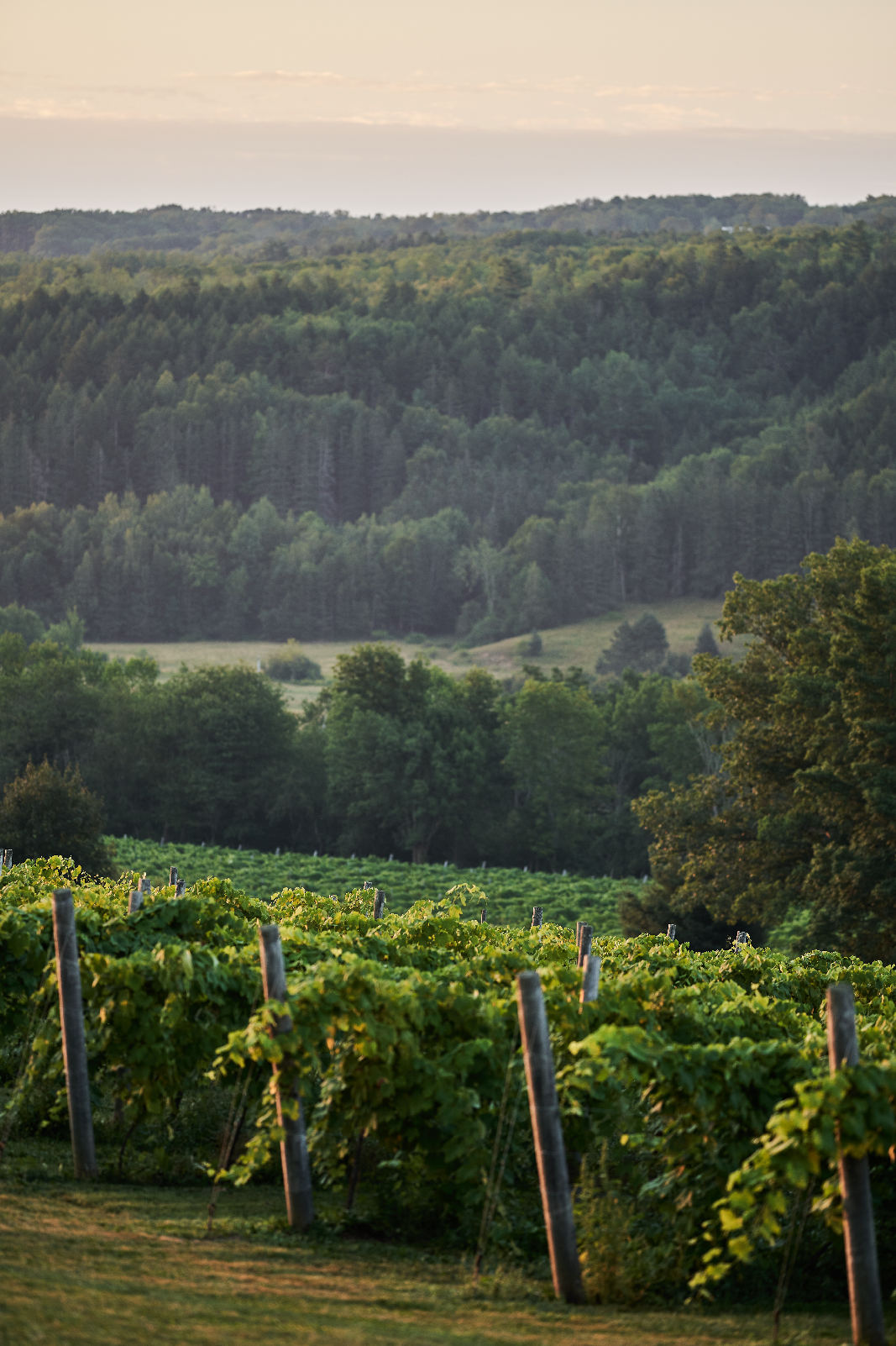VINEYARD
OUR STORY | VINEYARD | WINEMAKING | SUSTAINABILITY | WHERE TO BUY

In our endless search and evolution in defining what the word terroir means to Benjamin Bridge, two fundamental forces’ overarching impact intersect here in the Gaspereau Valley: water and the sun.
THE BUILDING BLOCKS OF LIFE
-
Like some of the greatest wine regions in the world, the Gaspereau Valley has a truly exemplary maritime climate. Its coastal terroir is shaped by its proximity to the Bay of Fundy, a vast expanse of seawater home to the highest tides in the world. The Fundy tides average a vertical shift of 14 to 16 metres, twice a day.
As the tides complete one cycle, 160 billion tonnes of seawater have shifted, more than all of the world’s freshwater river flow combined. This tidal energy ushers in cool breezes and moisture to the vineyards in the summer and creates a never-frozen body of water that provides moderation and humidity in the winter. -
From May to October, an average of 400 mm of rain falls with another 800 mm of precipitation from November to April, mostly as snow. The warmest weather in the Gaspereau arrives in June, July, and August with average daytime highs reaching between 24°C and 27°C. As autumn arrives, average daily temperatures drop to between 16°C and 22°C and the nighttime lows about 10°C colder than that.
45°N, 64°W
-

-
At 45°N latitude and 64°W longitude, the Gaspereau Valley spans approximately 12 kilometres within the more expansive Annapolis Valley, eastern Canada’s most famous fruit-growing region.
The Gaspereau River runs from east to west within the Valley, spilling into the Bay. The upper Gaspereau Valley is narrow and somewhat sheltered, and is tilted westward, significantly capturing more sun. Ambient daily temperatures during the growing season are heightened by this positioning, creating a collecting point for optimal heat absorption benefiting the Benjamin Bridge vineyards.
These moderated temperatures allow for the development of delicate aromatics and the retention of natural acidity in the grapes, so vital to the creation of top-flight sparkling wines made in the classic style.
The prolonged growing season permits an extended ripening process that enables the grapes to achieve full phenological maturity, critical to the texture and complexity of these sparkling wines.
The surrounding tidal activity promotes an unspoiled freshness while protecting against premature ripeness well into October and even November. As a result, sparkling parameters are met nearly three months after other regions in the northern hemisphere. The result is a highly prized combination of freshness and richness.

